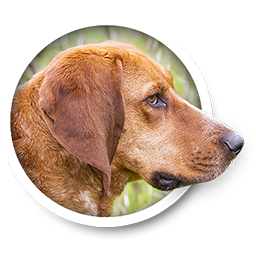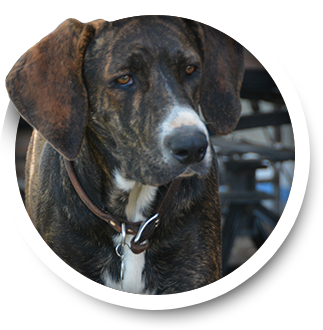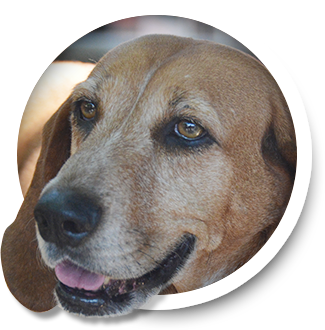Posted on 12/15/2019


Duke here and do you like to shop for shoes in Los Altos? When buying a running shoe, is quality important? Does durability matter as long as the shoes look fabulous? Would you rather have one pair of long-lasting shoes or two pairs of lower quality shoes at the same price? Tires work the same way, there are quality tires and then cheap tires. We will bark about this subject today. Watch my informative video first!
Is the warranty important when buying tires?
Los Altos drivers should also think about the safety aspect of tires. The tires do a lot of work – they carry the weight of the vehicle and you and your passengers. You want to be sure they hold the road and provide good traction on CA freeways and surface streets. If you carry heavy loads or tow a trailer on CA highways, the tires need a high load rating.
Ask your friendly and knowledgeable Los Altos tire professional at Allied Auto Works. I think it's important that Los Altos residents understand the effect of price on a tire's quality, performance and durability. When I was a kid, my dad would say, “Pay twice as much and buy half as many.”
The same principle applies to tires. The major tire brands that you're familiar with in Los Altos are known as Tier 1 tires. These tires are high quality and well-engineered. Comparable vehicle Tier 1 tires are usually priced similarly.
Stepping down, you come to private label tires. Some large CA tire store chains carry tires with their own brand. It's important to know that most private label tires are built by the same Tier 1 companies that you are familiar with – so you are pretty safe in choosing them. To be sure, you can ask your Allied Auto Works tire professional which manufacturer makes their private brand.
The lowest priced tires on the market in Los Altos are Tier 3 tires which are usually imported from China or South America. Since you get what you pay for, you can't expect a Tier 3 tire to deliver the same performance and durability as the others.
What's the difference in the tires with high mileage warranties? It's the rubber compounds and the amount of tread material. As you might expect, you'll pay more for the longer-lasting tire.
Your tires are the only parts of your vehicle that touch the road. You're only as safe as your tires are well built. Buy value – not price.
Duke

Allied Auto Works
2073 Grant Road
Los Altos, CA 94024
650.968.7227
http://www.alliedautoworks.com
Posted on 2/21/2019

 Hello Los Altos, Cayenne here and do you ever feel under pressure? Imagine how your tires feel when their under pressure. Well today we will bark TPMS (Tire Pressure Monitoring System. Watch my short video below to get started.
Hello Los Altos, Cayenne here and do you ever feel under pressure? Imagine how your tires feel when their under pressure. Well today we will bark TPMS (Tire Pressure Monitoring System. Watch my short video below to get started.
Have you noticed an increase in price when you get a flat tire fixed in Los Altos, or have your tires rotated? It might be the result of your TPMS, or Tire Pressure Monitoring System.
The federal government began requiring a TPMS system on 2008 model year passenger vehicles and light trucks. Some 2006 and 2007 models may have them as well. The system has a warning light that is mounted on the dashboard that will go on if one of the tires becomes severely underinflated.
Why the new requirement? Because underinflated tires are the number one cause of tire failure. Tire blowouts cause crashes and sometimes fatal accidents. Underinflated tires also need longer stopping distance and can skid, both of which also present dangers on CA roads. Many flat tires can also be prevented by proper tire inflation, and though this may seem an economic consideration, Los Altos drivers who have changed a flat on the side of the road recognize that this has serious safety concerns as well.
Advances in tire technology, specifically the development of radial tires, has made it harder for Los Altos drivers to recognize when a tire is underinflated. At a recommended pressure of 35 psi, a tire is seriously underinflated at 26 psi. But the tire doesn't look low on air until it reaches 20 psi. This raises concerns about vehicle owners being able to tell when their vehicles are a safety hazard on the road. Hence, the TPMS.
So, like seatbelts, the TPMS system is expected to save a lot of lives. The technology has been in use in race cars for years, and now it's being mandated for all passenger cars, SUV's, minivans and pick-ups. Besides warning drivers in the Los Altos area when their tires need air, the system is required to indicate when it is malfunctioning.
This increased safety won't come without increased costs. Estimates regarding the cost of maintaining the TPMS on your vehicle run from $27 to $100. Also, there will be an added cost for tire repair. Los Altos service centers have had to purchase new scanning equipment to work with TPMS sensors and other equipment to repair tires and wheels equipped with TPMS. The pros at Allied Auto Works have to be trained to use the new equipment. These costs will have to be passed on to Los Altos drivers.
Further, whenever a tire is changed, Allied Auto Works will have to deal with the TPMS. Sensors will have to be removed, then re-installed and re-activated. Sometimes the act of changing a tire will damage a sensor, and it will need to be replaced. These extra services will come at an added charge to Los Altos drivers.
Tire rotations will require that the TPMS be re-programmed. And whenever a vehicle's battery is disconnected, the TPMS will require re-programming as well.
The TPMS itself will require attention – it contains batteries and sensors that will wear out and need to be replaced.
So, if you've noticed an increase in the cost for vehicle care at your Los Altos tire center, it may not be the economy. It could be the cost of the TPMS in newer vehicles. Before you dash off an angry letter to Congress, however, stop and consider what you're paying for. If predictions are correct, the TPMS will save lives, and that will be a benefit to all of us.
Of course, no warning system will save lives in Los Altos if drivers don't pay attention to it. And remember that the warning doesn't come on until the tire is severely under inflated; you still should check your tire pressure at least once a month. You can prevent accidents and potentially save lives without a warning system by keeping their tires properly inflated.
Safe driving!
Cayenne

Allied Auto Works
2073 Grant Road
Los Altos, CA 94024
650.968.7227
http://www.alliedautoworks.com
Posted on 2/14/2019

 Hey it's Duke and today we will bark out how to get the right tires and wheels for you vehicle. Watch my video below and then let's get barkin'!
Hey it's Duke and today we will bark out how to get the right tires and wheels for you vehicle. Watch my video below and then let's get barkin'!
A lot of people get custom wheels in Los Altos. When you do this yourself (over the internet . . .) you could run into trouble if you're not careful. Sometimes, once they're mounted, they just don't fit right. The tires rub in turns or on bumps. You don't want that.
Consulting your Allied Auto Works tire professional can ensure you get the right fit. First he'll ask you a series of questions about your Los Altos driving needs and what you want in your new wheels. Now, not every wheel can go on every car. Care must be taken so that tires and wheels are not too large or that the wheel is centered too far towards the outside or the inside so the tires rub.
If you don't want to make any modifications to your vehicle, you would need to focus on the wheels that would fit. With trucks, some people in Los Altos like much bigger tires so they need a suspension lift.
Also, most Los Altos drivers don't realize that you need to keep the rolling diameter of your new tires – the overall height of the tire – very close to what came from the factory in order for your vehicle's anti-lock brakes and stability control systems to work properly.
The computers that control these systems are calibrated to a certain size tire. When you go bigger or smaller, the computer doesn't know what changes you made so it can't tell how fast you're going. This, of course, means it sends commands to the brakes and traction control that are based on the wrong speed. If you go with a different rolling diameter, your vehicle engine control computer can be reprogrammed for the new tire size.
Either way, there are hundreds of wheel and tire choices to choose from in CA. You can pick the style of wheel you want and then talk with your friendly and knowledgeable Allied Auto Works tire professional about how big the wheel should be – and how to select the right tire for your vehicle. Your Allied Auto Works service advisors will help you find the best tire to meet your style, performance, ride and handling needs in Los Altos.
And as they say, Big Wheels keep on turnin'
Duke 
Allied Auto Works
2073 Grant Road
Los Altos, CA 94024
650.968.7227
http://www.alliedautoworks.com
Posted on 11/29/2018

 Hey it's Cayenne and I'm spinning upside down today since it is all about the tires. So let's watch this video below and get rollin!
Hey it's Cayenne and I'm spinning upside down today since it is all about the tires. So let's watch this video below and get rollin!
Every Los Altos vehicle owner has to purchase tires at some time or another, so it's a good idea to understand what the choices are. The best seasonal performance is achieved by purchasing tires to match the season you are driving in. Summer tires are designed for hot temperatures. The tread is engineered for good traction on dry or rainy CA roads. But the rubber compound in summer tires gets stiff when temperatures drop below 45°F (7°C), and snow and mud can pack into the tread, reducing the traction of the tire.
Winter tires are designed for good traction on snowy surfaces. The tread actually throws snow off of the tire as the wheel turns. The rubber compound in a winter tire is soft so that it will remain flexible at temperatures below 45°F (7°C). At higher temperatures, however, the softer rubber wears down rapidly.
All-season tires sacrifice some of the extreme performance of summer or winter tires, but they maintain adequate traction in either type of Los Altos weather.
So your first consideration when buying a tire is where you live in CA, and where you usually drive. If you require maximum summer and winter performance you can go with dedicated summer and winter tires; you would just need to change out your tires each spring and fall.
For serious winter driving in CA, look for tires with a severe snow rating. These tires are labeled with a mountain-and-snowflake logo.
Your second consideration is the quality of tire to purchase. Summer, winter and all-season tires come in a variety of grades and styles at CA tire stores. Los Altos drivers will want to purchase a tire that will give them good wear and that will handle their driving style and road conditions. Your Allied Auto Works tire professional can give you auto advice as to which type of tire will best fit your needs.
Los Altos vehicle owners who drive off-road around CA may want to look at a high-grade tire that is designed for off-road use. These tires are designed to handle the extra wear of off-roading while still giving good performance on Los Altos streets and roads. There are a number of options to choose from so that you can find the right tire whether you are only an occasional off-road explorer or a serious rock climber.
New wheels can be purchased in the South Bay as a statement of style or to add personality to your vehicle. There are almost unlimited options. If you change the size of the wheels on your vehicle, however, you will need to get some professional help to make your vehicle compatible with its new wheels. Talk to your Allied Auto Work's Service Managers Travis or Matt for more information about tires.
Here's to rollin' down the highway,
Cayenne 
Allied Auto Works
2073 Grant Road
Los Altos, CA 94024
650.968.7227
http://www.alliedautoworks.com
Posted on 6/14/2018

 Duke here and what a beautiful day here in Los Altos. I thought today we would bark about your tire pressure and how it saves on fuel.........so let's get barkin' on this subject!
Duke here and what a beautiful day here in Los Altos. I thought today we would bark about your tire pressure and how it saves on fuel.........so let's get barkin' on this subject!
Underinflated tires waste gas for lots of folks in the Los Altos area. Think how hard it is to walk in sand – you just have to work harder because of the resistance. When your tires don't have enough air in them, their rolling resistance is dramatically increased and it simply takes more gas to get from here to there.
Always check your tire pressure when you gas up at one of our local Los Altos service stations. If they're low – even just a little bit – bring them up to proper pressure. There's a sticker on the inside of your driver's door that gives the manufacturer's recommended tire pressure.
And don't rely on your tire pressure monitoring system to alert you to when you need more air. The TPMS system is set to warn you when pressure drops 20 percent below recommendations. That's severely underinflated and you needed more air a long time ago. And if you have a slow leak – get it fixed right away at Allied Auto Works.
Get some air and save some gas.
DUKE

Allied Auto Works
2073 Grant Road
Los Altos, CA 94024
650.968.7227
http://www.alliedautoworks.com
Posted on 5/31/2018

 Hey it's Duke and I am feeling some pressure lately. Have you noticed an increase in price when you get a flat tire fixed in Los Altos, or have your tires rotated? It might be the result of your TPMS, or Tire Pressure Monitoring System. So let's get barkin' on this pressure issue!
Hey it's Duke and I am feeling some pressure lately. Have you noticed an increase in price when you get a flat tire fixed in Los Altos, or have your tires rotated? It might be the result of your TPMS, or Tire Pressure Monitoring System. So let's get barkin' on this pressure issue!
The federal government began requiring a TPMS system on 2008 model year passenger vehicles and light trucks. Some 2006 and 2007 models may have them as well. The system has a warning light that is mounted on the dashboard that will go on if one of the tires becomes severely underinflated.
Why the new requirement? Because underinflated tires are the number one cause of tire failure. Tire blowouts cause crashes and sometimes fatal accidents. Underinflated tires also need longer stopping distance and can skid, both of which also present dangers on CA roads. Many flat tires can also be prevented by proper tire inflation, and though this may seem an economic consideration, Los Altos drivers who have changed a flat on the side of the road recognize that this has serious safety concerns as well.
Advances in tire technology, specifically the development of radial tires, has made it harder for Los Altos drivers to recognize when a tire is underinflated. At a recommended pressure of 35 psi, a tire is seriously underinflated at 26 psi. But the tire doesn't look low on air until it reaches 20 psi. This raises concerns about vehicle owners being able to tell when their vehicles are a safety hazard on the road. Hence, the TPMS.
So, like seatbelts, the TPMS system is expected to save a lot of lives. The technology has been in use in race cars for years, and now it's being mandated for all passenger cars, SUV's, minivans and pick-ups. Besides warning drivers in the Los Altos area when their tires need air, the system is required to indicate when it is malfunctioning.
This increased safety won't come without increased costs. Estimates regarding the cost of maintaining the TPMS on your vehicle run from $27 to $100. Also, there will be an added cost for tire repair. Los Altos service centers have had to purchase new scanning equipment to work with TPMS sensors and other equipment to repair tires and wheels equipped with TPMS. The pros at Allied Auto Works have to be trained to use the new equipment. These costs will have to be passed on to Los Altos drivers.
Further, whenever a tire is changed, Allied Auto Works will have to deal with the TPMS. Sensors will have to be removed, then re-installed and re-activated. Sometimes the act of changing a tire will damage a sensor, and it will need to be replaced. These extra services will come at an added charge to Los Altos drivers.
Tire rotations will require that the TPMS be re-programmed. And whenever a vehicle's battery is disconnected, the TPMS will require re-programming as well.
The TPMS itself will require attention – it contains batteries and sensors that will wear out and need to be replaced.
So, if you've noticed an increase in the cost for vehicle care at your Los Altos tire center, it may not be the economy. It could be the cost of the TPMS in newer vehicles. Before you dash off an angry letter to Congress, however, stop and consider what you're paying for. If predictions are correct, the TPMS will save lives, and that will be a benefit to all of us.
Of course, no warning system will save lives in Los Altos if drivers don't pay attention to it. And remember that the warning doesn't come on until the tire is severely under inflated; you still should check your tire pressure at least once a month. You can prevent accidents and potentially save lives without a warning system by keeping their tires properly inflated.
Safe driving!
Duke

Allied Auto Works
2073 Grant Road
Los Altos, CA 94024
650.968.7227
http://www.alliedautoworks.com
Posted on 5/3/2018


Hey Duke here and are you looking at getting some new tires? Maybe the real reason for wanting those off-highway tires is that they look cool. Not as cool as me and well there's nothing wrong with that. If you make sure that you've got your functional needs covered with your selection, then you can have some fun with where you go from there. So let's roll into this subject and get barkin'!
Let's suppose you zip around Los Altos in a sporty car. You may like to run a high-performance summer tire when the weather's good. When CA weather turns cold, you can put on high-performance winter tires. For the kind of driving you like to do, you want full-on performance tires. All-season tires are naturally a compromise that works well for most Los Altos drivers, but since you have a choice, go for dedicated summer and winter tires.
When it's time for new tires, visit with a knowledgeable Allied Auto Works tire professional. Describe your needs and wants. He'll come up with some selections for you to discuss. And once you settle on a type of tire, there are options for special needs: like pulling a trailer or carrying heavy loads.
Tires are one of the biggest purchases for Los Altos drivers. With so many choices, you'll be able to get what's best for you. Take your time. And don't worry about what's in stock. If you want something that isn't here at Allied Auto Works, we can order it. Chances are you'll be rolling on your new tires in a couple of days.
Let me know if you have any other questions! I am always here to bark at you.
Duke 
Allied Auto Works
2073 Grant Road
Los Altos, CA 94024
650.968.7227
http://www.alliedautoworks.com
Posted on 1/4/2018

 Round and round they go, Cayenne here and today we will bark about maintaining our tires.....so let's get those wheels in motion!
Round and round they go, Cayenne here and today we will bark about maintaining our tires.....so let's get those wheels in motion!
With the recent focus in the Los Altos area on improving fuel economy, we've been told how important it is to maintain our tire pressure.
Los Altos drivers know that tires wear out, but we want to make them last as long as possible because they're not cheap to replace. In addition to saving gas, properly inflated tires last longer. Underinflated tires will wear out more quickly.
Some people in Los Altos wonder if they should add a few extra pounds of pressure when they fill up their tires. Bad idea. In fact, there are very good reasons not to overinflate your tires. For one, the middle of the tread will wear unevenly because the full tread is not contacting the road properly. That also adversely affects your handling.
Stop by Allied Auto Works to see about tire maintenance for your vehicle.
Allied Auto Works
2073 Grant Road
Los Altos, CA 94024
650.968.7227
http://www.alliedautoworks.com
Every vehicle in the Los Altos area has a sticker on the driver's side door jamb that tells you the vehicle manufacture's recommended tire pressure. This recommendation is an integral part of the vehicle's suspension tuning. A lot of engineering actually goes into the recommended tire pressure, so it's important for drivers to follow it.
What else do Los Altos drivers need to know about tire maintenance? Tire rotation and balancing are very important. Let's start with rotation. Because the front tires handle the brunt of turning forces, the shoulders of the front tires wear more quickly than the rear tires. At Allied Auto Works in Los Altos, we rotate the tires so that they all get to do some duty on the front, and they'll all wear evenly over their live.
For most vehicles, front tires are rotated to the rear and vice versa. Others recommend a cross rotational pattern. Some vehicles use an asymmetrical tire so those tires need to stay on either the right or left side – it'll say which on the tire. Some high performance cars have asymmetrical tires and different sizes on the front and rear. These can't be rotated at all. Your owner's manual will have details for your vehicle or ask your service advisor at Allied Auto Works.
How often should people near Los Altos rotate their tires? Your owner's manual will have a recommendation. Your technician at Allied Auto Works in Los Altos can do a visual inspection to let you know if it looks like it should be done. The interval is typically around 5,000 miles/8,000 km.
You know, some people don't think new tires need to be balanced. What they aren't taking into account is the wheel. Between the wheel and the tire – even a new tire – there's enough variation to require balancing.
When you add the valve stem and tire pressure monitoring sensors required on new cars, balancing is definitely important. When a tire's out of balance, it's actually hopping down the road. Los Altos vehicles with tires out of balance will feel the vibration through the steering wheel if a front tire's out of balance and through the seat if it's a rear tire.
Proper wheel balance promotes tire life and increases safety for Los Altos drivers and their passengers. Historically, lead weights have been attached to the wheel to bring it into balance. Lead gives some environmental concern, so steel weights are starting to be substituted.
The team at Allied Auto Works also wants to remind you that it is important to always use the same size tire on an axle. Different size tires on the front or on the back can lead to some real handling problems. And tire manufacturers recommend that when you get two new tires, they be installed on the rear because that's where you need the most traction to avoid spinning out.
Keep on Truckin'
Cayenne 
Posted on 12/28/2017
 Brrrrrr......it's starting to really feel like winter here in Los Altos. Hi it's Duke and we are going to take a spin on Winter Tires today, so let's get those wheels in motion!
Brrrrrr......it's starting to really feel like winter here in Los Altos. Hi it's Duke and we are going to take a spin on Winter Tires today, so let's get those wheels in motion!
What type of technology do you use? Do you prefer an 8-track tape or an iPod? When it comes to winter tires, much of the public's perception dates back to when 8-track was the best way to listen to the Bee Gees.
Twenty years ago, winter tires differed from highway tires only in their tread design. We called them snow tires back then and they had big, knobby lugs that were designed to give good traction in deep snow. They had the same rubber compound as regular tires and they weren't very good on ice, packed snow or wet roads. They were not even very good on dry roads. They really helped in deep or loose snow, but they did a poor job the rest of the time. They were loud and rode hard. You couldn't wait to get them off in the spring.
Then all-season tires started to come along. All-season tires are really a compromise between summer and winter performance. They have acceptable hot weather ride and tread life, and you can get through mild winter road conditions OK. But there are some really good reasons to consider winter tires.
Modern winter tires do a terrific job in a wide range of winter conditions. First of all, below 45 degrees Fahrenheit, regular tires become hard and inflexible. That means they don't provide the road grip you need. Even if you don't live somewhere with a lot of snow, but it still gets below 45 degrees in the winter, you will be safer with winter tires.
In addition, they are specifically designed to more effectively move snow and water. That's the key to traction on ice, packed snow and wet roads. They use a micro-pore compound that allows the tire to bite into ice and snow. They also use wider grooves that run around the circumference of the tread to expel snow from the tire better. The lugs and grooves on winter tires have a special shape that throws the packed snow out of the tread as the tire turns. The tread is then open when it comes back in contact with the road and can provide good traction.
Winter tires also have a lot of sipes. Sipes are thin slits in the tread. The edge of the sipes grab ice and packed snow to provide tons of traction and to expel water and slush out of the tread. winter tires have a rounder casing to cut into the snow's surface. The treads on regular summer tires can actually get packed with snow instead and become very slick. winter tires offer 25% to 50% more traction than all-season tires. And when it comes to stopping power, all-season tires take 42% longer to stop than winter tires. Sometimes that's the difference between getting home safely and spending the night in a snow bank.
Now back when the 8-track was king, you just put snow tires on the drive wheels. That worked out OK because the rubber compound was essentially the same. Now, winter tires provide so much more traction than all-season or summer tires, that there's a huge difference between the traction at the front and rear ends of the car if you only put winter tires on the drive wheels.
For example: if you take a corner on an icy road and the rear end starts to slide out, essentially the rear is trying to pass the front because it's going faster. If you have high traction winter tires only on the front, they are going to be much more effective at transferring cornering grip and stopping power to the front wheels. This will actually cause the rear end to whip out even more.
That's why tire manufactures instruct their dealers that they must install winter tires on the rear wheels as well whenever they put winter tires on the front end of any vehicle. It's a major safety concern. It's strongly recommended that winter tires be installed on all four wheels on rear wheel drive vehicles as well. The front tires do most of the steering and braking work - it only makes sense that you provide the front end with the best traction you can.
People often assume that if they have four-wheel drive or all-wheel drive they don't need winter tires on all four wheels. Would you intentionally disconnect the four-wheel drive in poor road conditions? Of course you wouldn't, but that's essentially what you do if you only put winter tires on one end. It only makes sense to have the same level of traction and control at all four corners.
The province of Quebec in Canada has issued a law requiring all passenger vehicles, taxis and rental cars with Quebec license plates to install a full set of four winter tires between November 15th and April 1. It's that important.
Many modern cars have traction control and anti-lock brakes so people may think that they don't need winter tires. But you need traction to accelerate, steer and stop. The tires provide the traction so that the traction control and anti-lock brakes have something to work with.
Look for tires with the symbol of a mountain with a snowflake in it. This means the tire complies with the severe snow standard. All-season tires will have an M&S, for mud and snow, on the sidewall.
So when the temperatures drop below 45 degrees, be sure you have a set of four winter tires for maximum performance in snow, packed snow, ice, wet and dry roads. Your tire professional can help you find the right winter tire for your vehicle and driving needs.
Well here is to the New Year 2018 and safe driving,
Duke 
Posted on 9/6/2017

 Hi Cayenne here on this beautiful Summer day. I know I love to go for long car rides and an important factor is the tire to make your ride pleasant. So today I will bark to you about rotating and balancing your tires and what a difference it can make. So let's get barkin!
Hi Cayenne here on this beautiful Summer day. I know I love to go for long car rides and an important factor is the tire to make your ride pleasant. So today I will bark to you about rotating and balancing your tires and what a difference it can make. So let's get barkin!
Tires do a lot of work for Los Altos drivers. They transfer engine power and braking forces to the road; they handle steering control; and they cushion all those bumps and jolts while driving around Los Altos. They also support the entire weight of the vehicle, including you and your passengers. With such important work to do, you want your tires to do their job well. And since replacing tires is fairly pricey, you want them to last as long as possible.
There are three keys to long, even tire wear for Los Altos driving:
- Proper tire inflation
- Proper wheel alignment
- Regular tire rotation and balancing
The front tires on a car take the brunt of the steering forces. As they push through turns, the shoulders of the front tires wear down more quickly than the rear tires. Rotating front and rear tires allows them to all wear at about the same rate. That's especially true of front-wheel-drive vehicles whose front tires steer and put the power to the road.
SUVs and pick-ups, especially four-wheel-drives, also tend to wear their tires more unevenly than cars because of their suspension and drivetrain set-up. Your owner's manual will likely contain a schedule for tire rotation. It's usually every 5,000 miles/8,000 km or so.
Also, there are different rotation patterns for different vehicles. Allied Auto Works will know which is right for your vehicle. That brings us to wheel balancing. When wheels are balanced, they spin on the axle evenly. When they are out of balance, they wobble a bit. That makes the tires wear unevenly and may transmit a vibration to the car. Your friendly and knowledgeable Allied Auto Works service advisor puts weights on your wheels to balance them out so that they turn true and smooth.

Tires are a big investment for Los Altos drivers. They're designed for keeping you safely on the road in Los Altos. The cost for regular rotation and balancing is more than made up in extended tire life. And, can you really put a price on your safety and that of your passengers?
Til next week, this is Cayenne
Allied Auto Works
2073 Grant Road
Los Altos, CA 94024
650.968.7227
http://www.alliedautoworks.com